Introduction
This column is a potpourri of topics, so I hope you bear with me and I hope some of the information I have in here helps you in what you are doing or in fulfilling your dreams to be more successful in your life.
This edition is on Quebec.
Going viral
Everyone wants to go viral; it was on my bucket list. You want to go viral for many reasons with one of them being that you want to be popular. By going viral you hope it will increase the web traffic to your LinkedIn page, and this will hopefully increase your followers. By having something to go viral gives you a lot of exposure in a small amount of time without much effort.
I think how you go viral is to write about something you are passionate about and when people see your passion, they tend to like it and that attracts others to see it.
If you know me, you know that I am passionate about encouraging people to improve themselves and I tend to tell students to go beyond their Bachelors.
This attitude of wanting to get people to do better actually came out when I took the Myers and Briggs personality test recently. The Myers and Briggs personality test has 16 different personality types. The personality test described my personality as wanting to reach out and inspire others to achieve and to do good in the world. It said that I had a natural confidence that begets influence, and I take a great deal of pride and joy in guiding others to work together to improve themselves and their community.
Then it happened, unexpectedly I went viral.
The post was about getting higher education. It was a re-share of Asim Qureshi (CEO Jibble.io) post but what I added was:
Recently I got into a debate on why Post graduate degrees, particularly PhD’s, were important.
This sums it up - degrees are important because they become passports opening up opportunities. The stronger the passport the better the opportunity.
In 2018, in the US, 35% had their Bachelors; 13% their Masters; 2% their Doctorate.
If we look at CEO’s and their education: 97% have their Bachelor’s degree; 64% Master’s degree or equivalent (including MBAs); and 10% hold a Doctorate degree.
Something even more interesting, in a study looking only at the younger third of CEOs, the share of those who studied abroad rises to 41%. This implies future generations of CEOs are even more likely to have studied abroad at some point during their academic education.
Studying abroad allows you to become open minded, learn about different cultures, history & politics & to learn different philosophies / opinions than those that are in your own country.
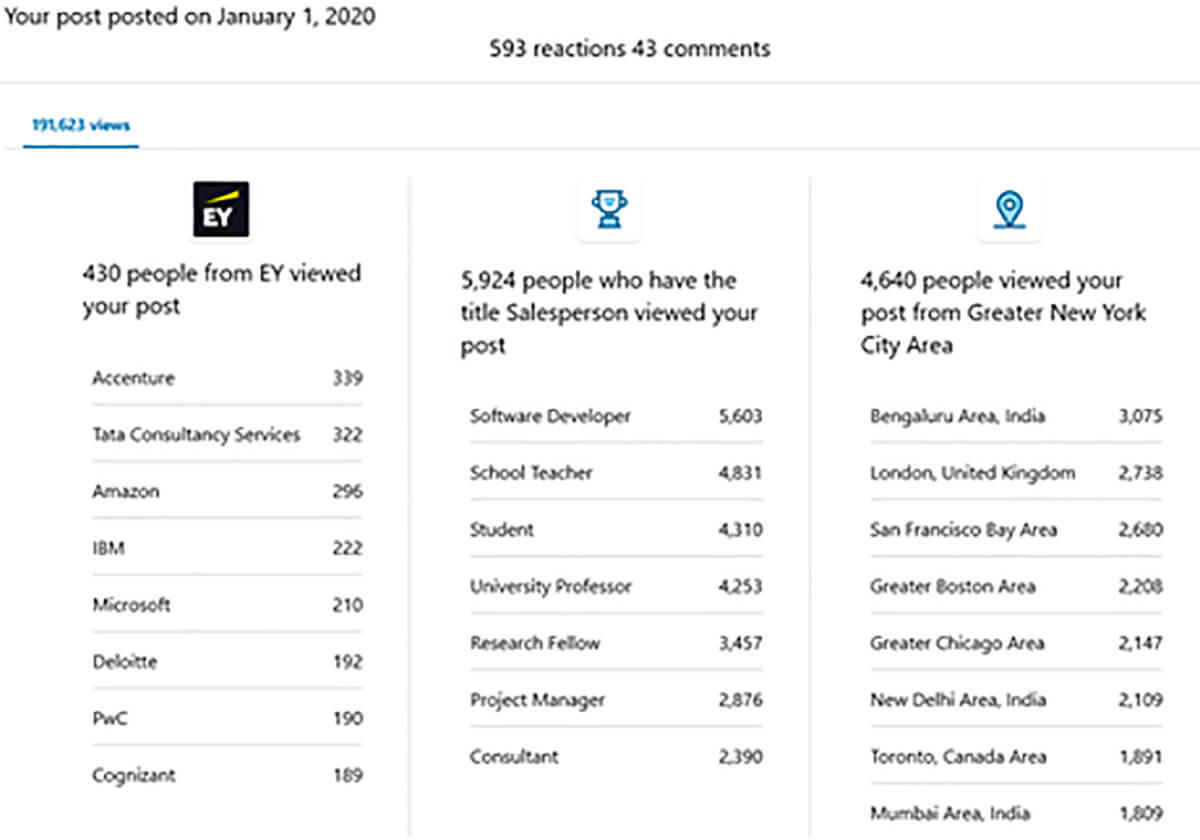
Not everyone can be a CEO
When I wrote this, I wanted to address the urban myth that because Bill Gates, Steve Jobs and Mark Zuckerberg did not have a degree that non-degreed people can become CEO’s easily.
To set the record straight:
Bill Gates attended Harvard before he dropped out and scored 1590 out of 1600 on his SAT’s (Wikipedia, 2020a).
Steve Jobs attended Reed College in Portland, Oregon for 1 year before he dropped out (Wikipedia, 2020b).
Mark Zuckerberg also attended Harvard and was known for his programming skills (Wikipedia, 2020c).
There are CEO’s who did not attend any post-secondary schools at all such as Richard Branson. Branson is known for being humble and one of the leadership qualities is he puts his company and people first before himself (Business Alligators, 2016).
In this post I pointed out that millionaires / billionaires turn to smart people that they feel have that unique skill that will help them. Steve Jobs had Woz (Steve Wozniak) even Bill Gates had Paul Allen and Gates has said publicly that it was his ability to put together great teams that allowed him to be successful.
Qualities of a CEO
If you wish to be a CEO or on the executive, you need to believe in your vision and then you need to be able to articulate your vision to investors and to your team. Therefore, we encourage people to learn how to do presentations.
No matter who you are, you will have to do presentations.
To become a CEO, you need to do the following (Rosenkoetter Powell et al., 2018):
- Have deep industry-specific and firm-specific knowledge.
- Overachieve when it comes to results. Reliability and knowing they will deliver is important.
- Surround yourself with strong talent and lean on the team to contribute their ability to solve problems, especially in areas that you are weak in.
Getting lucky – being successful
- Expose yourself to new concepts by obtaining a post secondary education. When I attended University, I took many courses that I thought I would never use. One was a Computer Science on machine learning where I learned 1 and 0 were binary for on and off.
- Gain exposure to software and tools that can be used to make you more successful in your job such as geoLOGIC’s geoSCOUT, Hampson-Russell, Petrel, GeoGraphix, geologic Well Completions & Frac Database, IHS Energy Accumap, etc.
- Learn ideas within your organization. If you come from certain companies, you tend to have a shared community knowledge. An example of this is most from BP are familiar with Extended Elastic Impedance.
- Take on projects that are outside your comfort zone by doing things like working up a new play that the Vice President of Exploration is interested in or volunteering to help with the United Way.
- And, at times we are successful because of plain luck and being in the right place at the right time. There is a saying by Seneca (4 BC – A.D. 65) that luck is what happens when preparation meets opportunity.
Simple ideas the best
One time when I was a Junior Geophysicist (had about 4 years experience), I was put on a land crew to do static binning of the fold as they acquired the data, produce geometry (SPS) files, merge the geometry into the trace headers, check the geometry by producing Linear Moveout (LMO) shots, and produce brute stacks to check the noise levels.
LMO shots are not really talked about in University. They are where we apply the velocity of a refractor to the data to flatten it and if it is flat we know the right receivers and shor X and Y coordinates have been applied in the geometry merge. The weathering layer will not be flat since it has a different velocity, but the refractor will be if the shot has the right geometry applied to it.
Prakla, the German division of Geco-Prakla, was doing this workflow on a Shell Transition zone crew in Dokkum, Holland, applying this work flow to the data they were acquiring. Before this land project started, I was asked to visit that crew and learn all they were doing.
Everything we were going to do with the field processing was new to North America. There was added pressure because this seismic survey was being shot with vibrators in the middle of a city in Texas, and it was the first time we were going to attempt this.
Received my first tapes and each time I looked at the LMO shots the refractor was not flat suggesting a geometry bust. I then looked at the Observer logs and they said the record / shot / field file had 380 traces, but I counted 375 traces and was unsure where the 5 traces went to. Started to investigate doing Seg-D trace header dumps and I noticed that there was 375 trace type 1 and 5 trace type 0. I then went through the files from the Recorder, and they specified 380 traces.
Related my issues to the Party Chief that somehow when they recorded the data there was a trace type 0 being assigned to the headers. The Party Chief had 30 years of experience, was from Texas and wanted me to call him Jefe which is Spanish for Chief. He told me that I was inexperienced and that I was wrong, or it was the equipment that was screwing up. So, they decided to take the tapes to the Recorder and plot them out. When they read the tape there was only 375 traces. They tried it all afternoon trying to get the 5 traces back to prove me wrong. They changed settings, put on other tapes and tested again until they finally gave up.
Seeing that it was the exact number of traces that had trace type 0, I knew my software could only read trace type 1’s so I called Houston and asked them if we could get a programmer to write a routine that changed a trace type from 0 to 1 and so they did.
We managed to recover the data and the Acquisition division accepted us on crew from that point on seeing we noticed problems early on and collaborated with them to solve the problems.
Years later while at a conference someone came up to me out of nowhere and said they had tried to reprocess that data and just threw out the problem data. They then asked me what the fix was for that data that I had found, and I told him. After I told him what it was, he looked at me, smiled and said “It really was that simple? Do you realize how many of our researchers and programmers tried to figure it out?”
Really not that smart, but I just kept trying to figure things out being perseverant and will at times out of frustration try looking at things differently. For me on dealing with that problem the key was the dropped traces and why they were dropped.
Different perspectives
When we do things, we should take a step backwards and try to see it from an unfamiliar perspective. How we want to do things may not be the best way and at times it is just trying innovative ideas.
Those innovative ideas may fail at first so do not give up, but we learn from those failures and adjust until we achieve what we want. Some of this involves seeing what is going on and taking note. We do not get it right the first time but if we stay at it, we will solve it.
Changes that have changed our industry
There have been big changes in our industry in regards to the unconventional plays by looking at things from a unique perspective such as drilling horizontal wells off a single pad to minimize disturbance on the surface and our impact to the farmers or landowners.
As the price of oil dropped, we also had to change how we drilled these wells to improve our production and lower our costs. Some of the changes that were done were
- Changing the geometry of horizontal well (i.e. length of horizontal well; number of stages; amount fluids used; and proppant placed).
- Changing the completion techniques such as using zipper fracs where fracturing operations are conducted concurrently on two horizontal wellbores that are close and parallel to each other.
- Target porous stringers within the shales that were visible within the geophysical or geological mapping in the preplanning which allows the drill bit to go faster since porous rock offers up less resistance.
- And, there have been significant changes in the drill bit that have allowed us to drill quicker, so less time is spent drilling.
Recently we have even changed the pad drilling, improving on the idea by having companies drilling multi-lateral wells off a single borehole (i.e. the Montney where we have multiple producing zones).
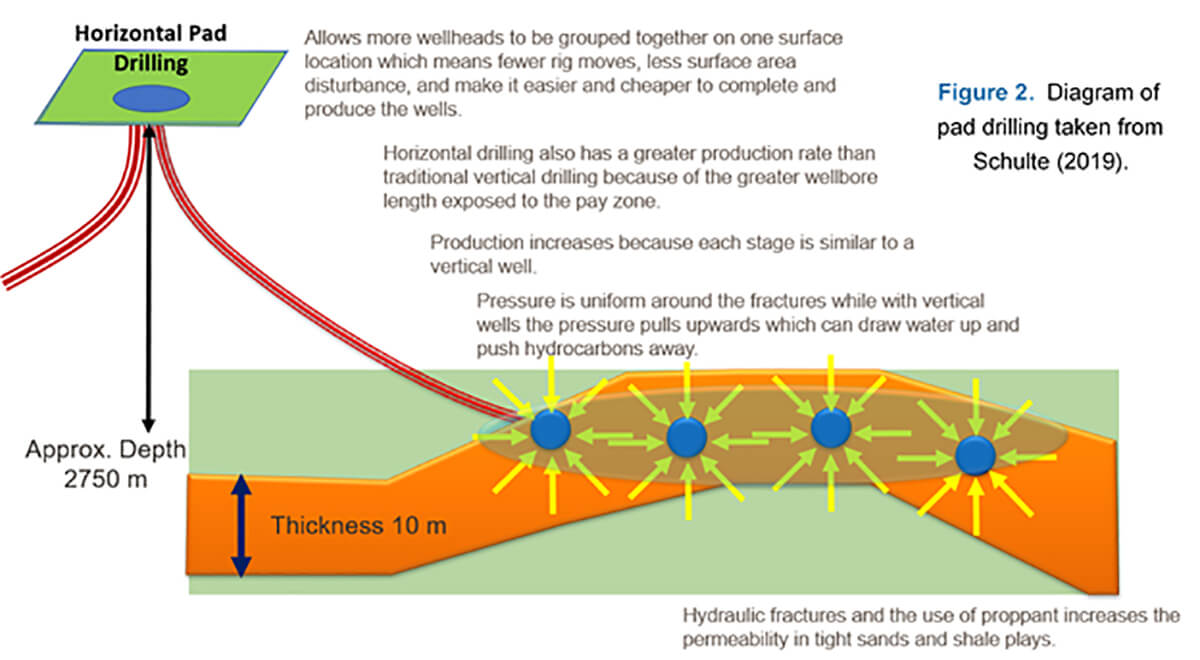
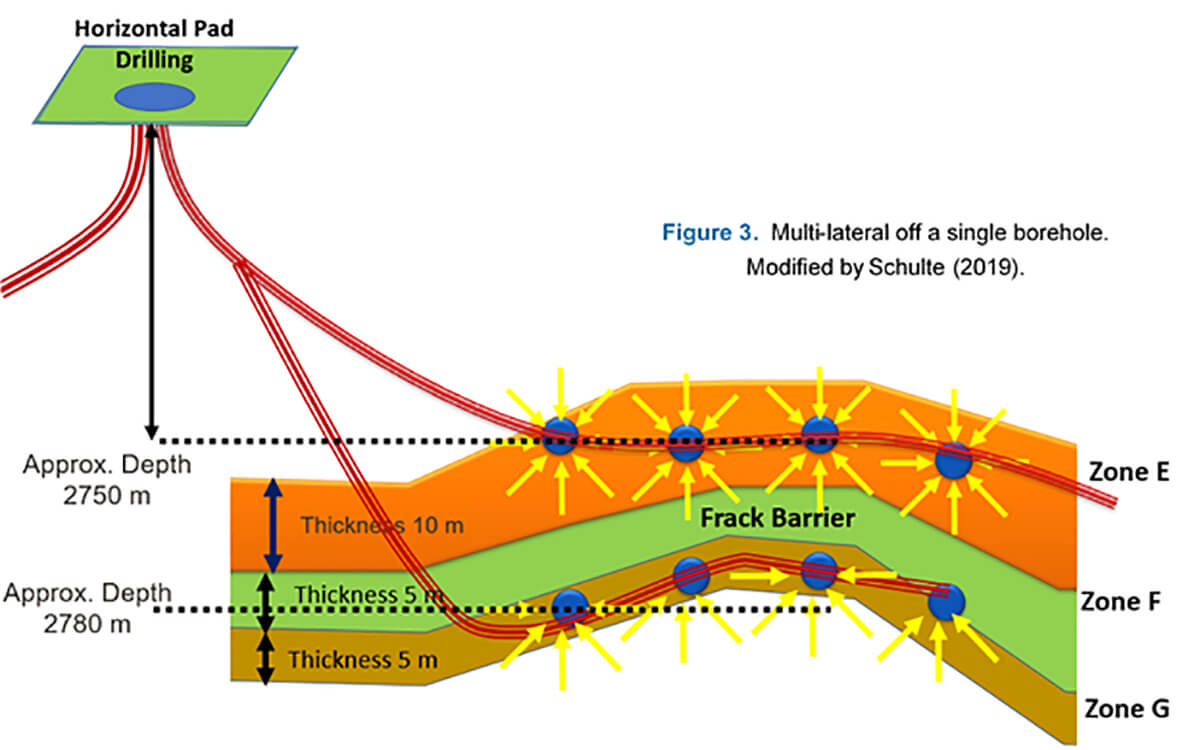
Ways to improve what you are doing
On the internet there is free software that we can we use that can help us to understand things better we just do not know about it or where to find it.
The following software is free, is online and it can help you to map oil and gas plays, see the trends within the plays, and understand the reservoirs. If you are going for a job interview you can use this software to understand more about the company and you can formulate questions around it. This allows you to appear that you have done your homework.
AER Playbook
One of my favorite’s is the AER playbook which can be found at https://www.aer.ca/providing-information/data-and-reports/play-workbook.
The playbook can give us information about a play that we are working on. The playbook was run for the Viking in Grande Prairie, see Figure 4.
With the Playbook we can see the “Play extent and activity;” “Play reserves and production;” and “Play well status.” This is information you need if you are considering going into a play.
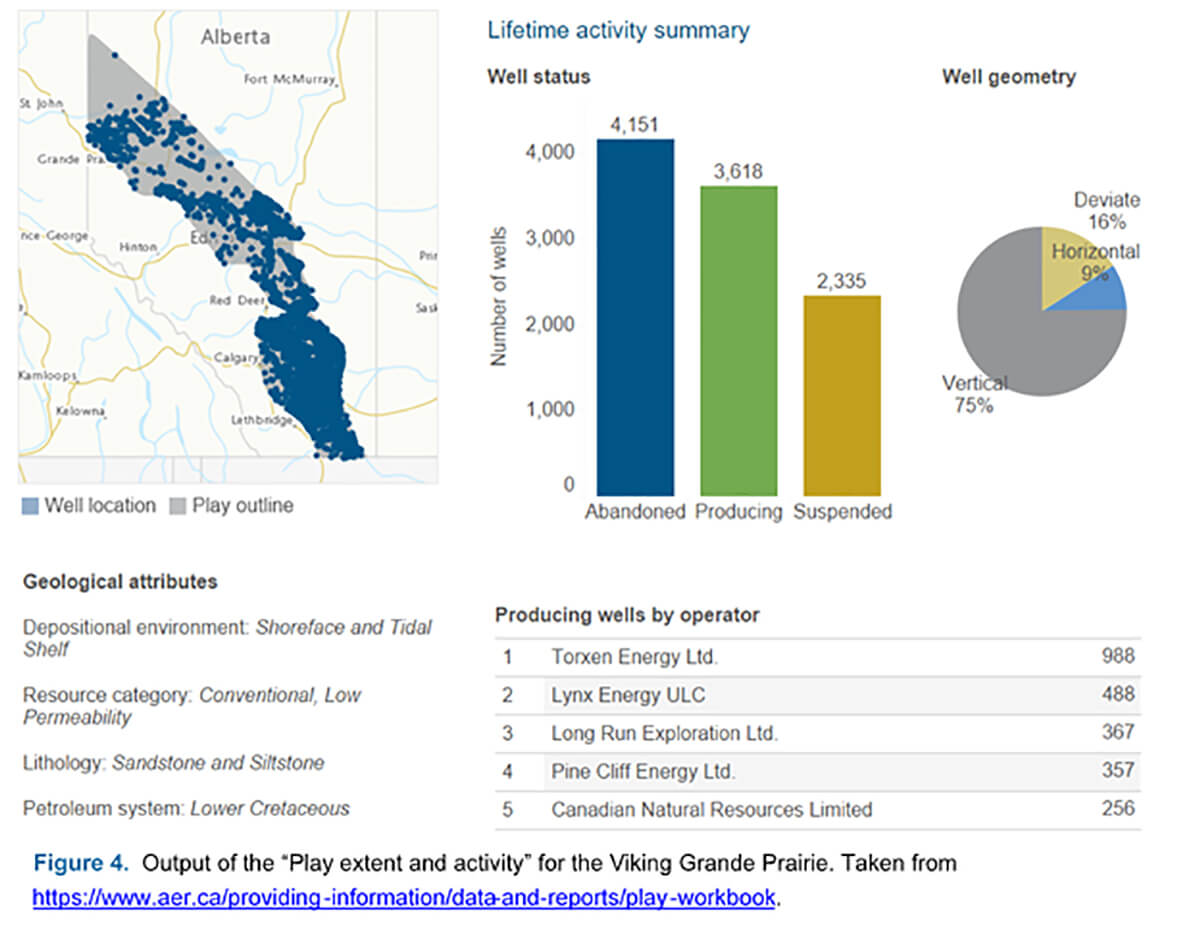
BOE Report
There is also the BOE Report which can be found at https://boereport.com/well-map/. This can show you who has been drilling and where or all the wells that have been drilled into a formation. Again, it was run for the Viking (Figure 5) and we can see the fluid distribution for the Viking which resembles what we expect for the Deep Basin where we have gas under oil.
Jim Gray and John Masters were the first to propose the ideas around the Deep Basin being gas filled tight sandstone reservoirs that were in down dip structural locations with porous water filled reservoir rock updip (Masters, 1970). Using this as their play type they formed Canadian Hunter Exploration Ltd. so a great company was formed by an unconventional idea based upon observations.
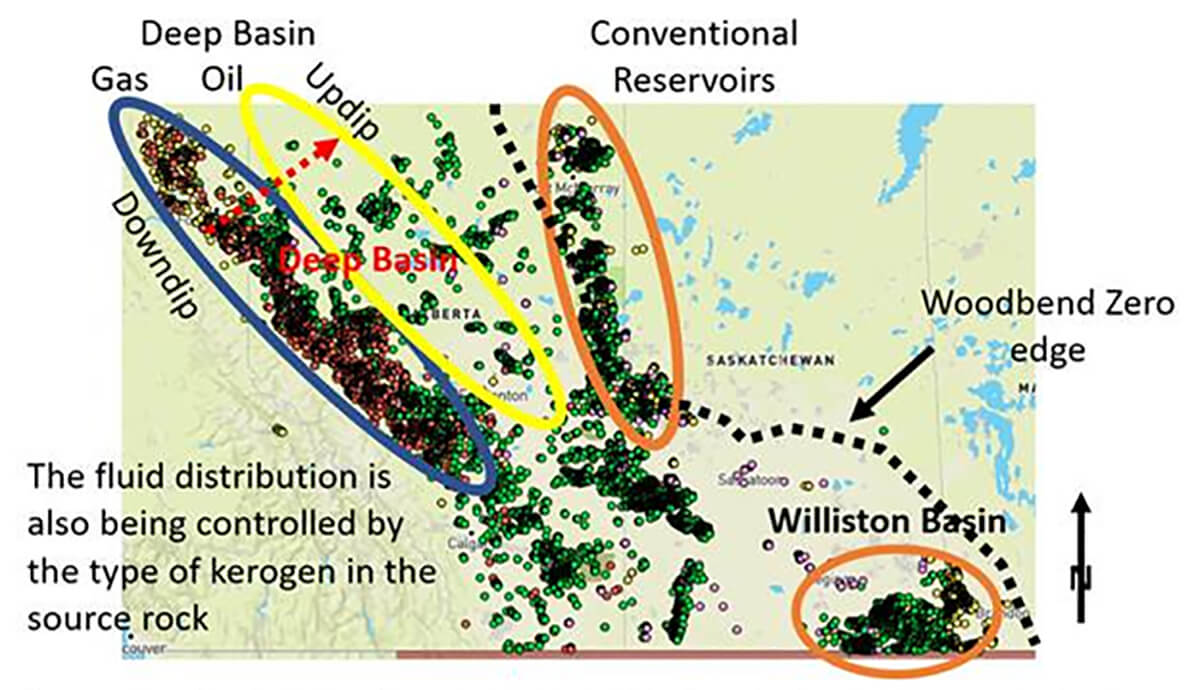
Leadership
As mentioned above, being a true leader, you need to learn to lean on the ability and strength on your team (Rosenkoetter Powell, et al., 2018). It is important to have a round table and examine things from different perspectives because we do not always have the answer. Even the most junior people can have input to the complex problems we are dealing with. They see things from an untainted perspective.
Companies should always be looking at how do we gain the competitive advantage over other companies in an area and should be asking for innovative ideas. There is a lot freeware out there that can help you do your job. Only two such software were suggested in this column.
The above example on the missing traces shows how something simple can make a significant difference; it saved the data that was compromised. Our solutions do not have to be complex, and sometimes the best solution is quite simple.
I encourage all to learn programming and data mining to apply to the data to fix problems you may have. One of the most powerful scripts I have written are Unix “awk” and “sed” scripts. I utilized these programs to find errors, re-organize data into different formats, and I have even used them to load microseismic.
Solutions do not have to be complex. Knowing the right tools and being able to apply them properly can improve our results.











Share This Column